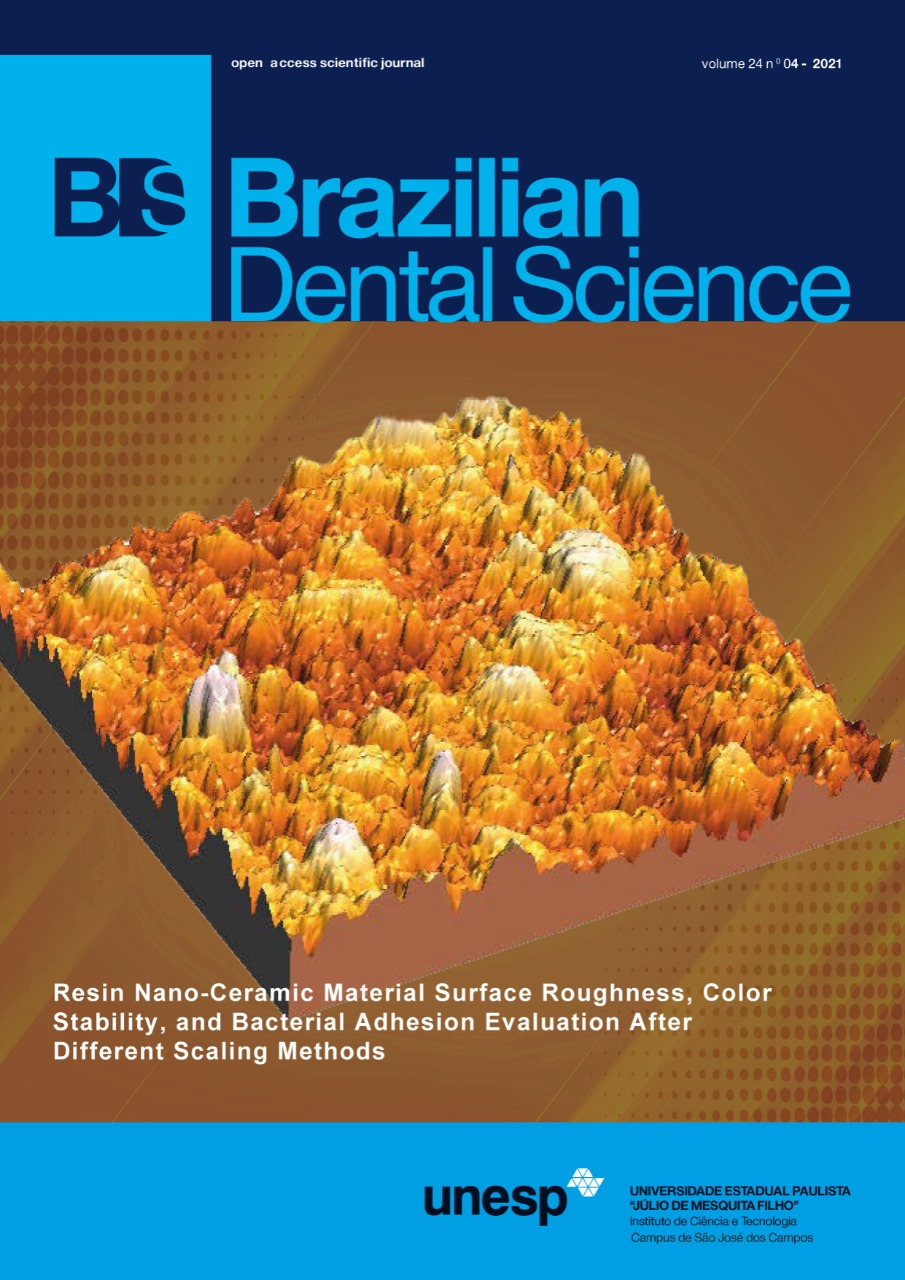Polywave And Monowave Light-Curing Units Effects On Polymerization Efficiency Of Different Photoinitiators
DOI:
https://doi.org/10.14295/bds.2021.v24i4.2661Abstract
Objective: of this study was to characterize and correlate the absorption spectra of three photoinitiators [camphorquinone (CQ), diphenyl(2,4,6-trimethylbenzoyl) phosphine oxide (TPO) and phenylbis (2,4,6-trimethylbenzoyl)-phosphine oxide (BAPO)], using second or third-generation light curing units (LCU), and to evaluate the degree of conversion and the physical properties of an experimental resin adhesive. Material and methods: Second-generation (Radii-cal® and Emitter D®) and third-generation (Valo® Cordless and Bluephase N®) LCU were assessed regarding spectrum and irradiance rate of emitted light. Also, the photoinitiators (CQ, TPO and BAPO) were characterized by a light absorption spectrum assessed by UV-Vis spectroscopy, degree of conversion and yellowing effect. Statistical analyzes considered two-way ANOVA and post-hoc Tukey test. Results: BAPO presented higher reactivity compared to TPO. Regarding degree of conversion of the photoinitiators activated by different light-curing units, the Emitter D® device promoted a high degree of conversion. BAPO presented the highest yellowing effect values. Conclusions: The emission and absorption characteristics of the photoinitiators were different. The polymerization reaction activated by the second-generation light-curing unit was reduced when using an experimental resin with photoinitiator TPO, and the third-generation light-curing unit showed a higher polymerization potential regardless of the photoinitiator.
Keywords
Light-curing of dental adhesives; Photoinitiators dental; Curing lights dental.
Downloads
Downloads
Published
How to Cite
Issue
Section
License
Brazilian Dental Science uses the Creative Commons (CC-BY 4.0) license, thus preserving the integrity of articles in an open access environment. The journal allows the author to retain publishing rights without restrictions.
=================




























